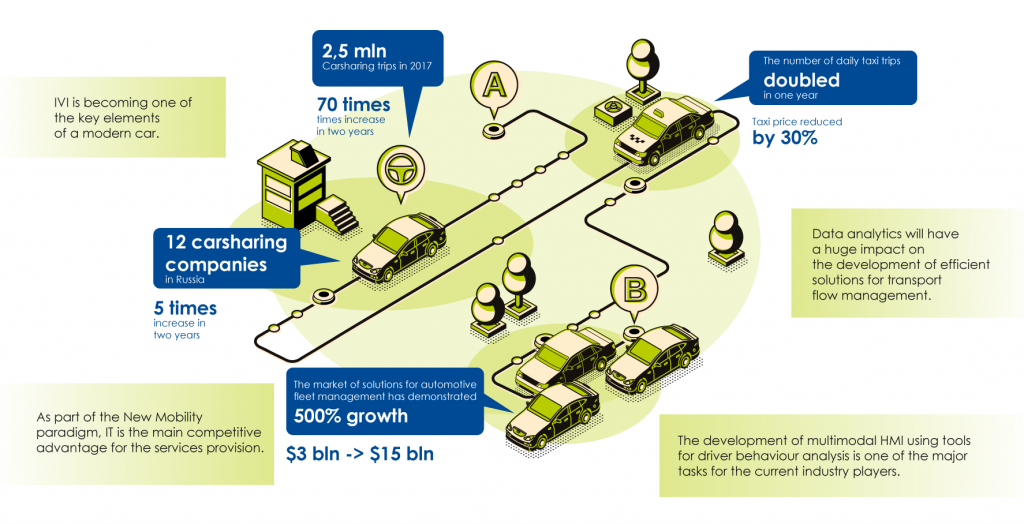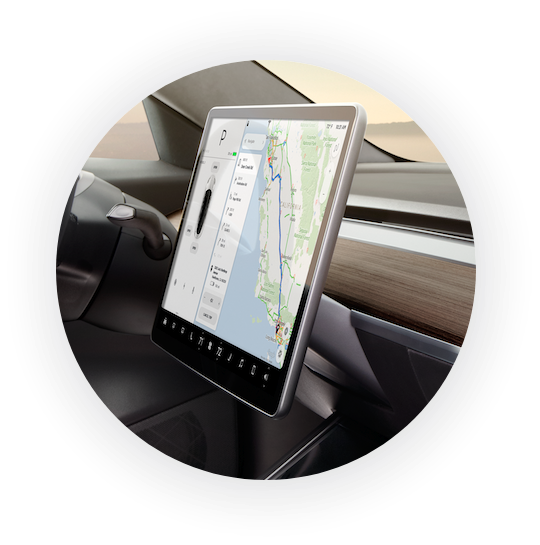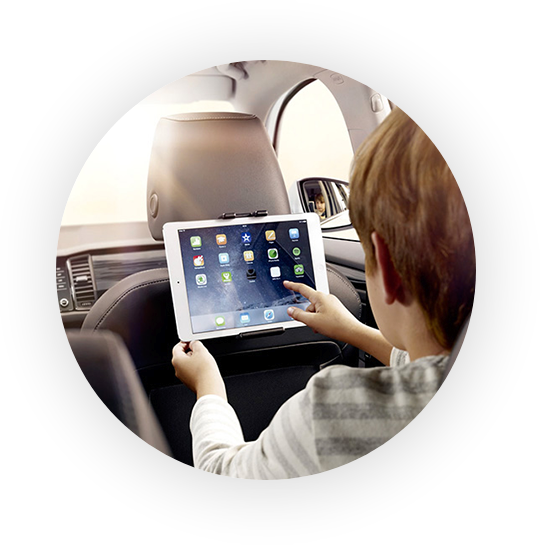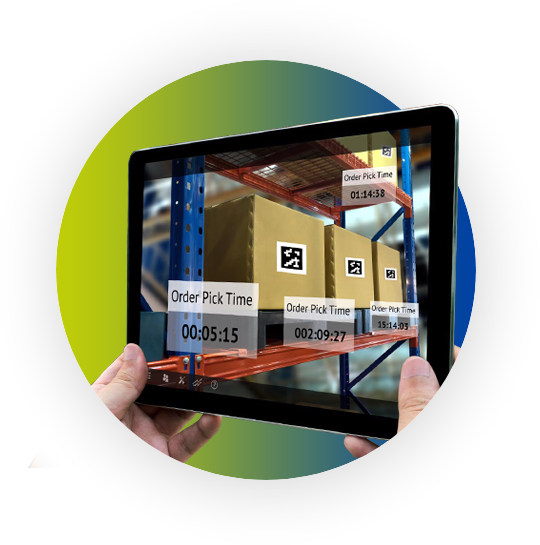Smart Mobility
Improving scenarios of human-car interactions
Transport and transport infrastructure are changing along with the technology development. As a result, human-car interactions are also changing. Previously non-existent trends appear together with new business models (for example, uberisation and carsharing) and monetisation standards, ADAS systems and self-driving vehicles.
The key task of the Smart Mobility division — implementing efficient scenarios of human-car interactions. Our team implements HMI projects, develops software and supplies electronics to the automotive market.

Directions
HMI in the automotive industry
HMI (Human-Machine Interface) is an important component of any automation system. Our task is to adapt interface based on the current traffic situation and drivers' personal preferences, as well as integration of a vehicle's systems with the city infrastructure elements.
Tomorrow's trends will be systems for active assistance to drivers, using 3D graphics and displays visualising the required information, gesture and voice control technologies, interaction of the vehicle with an external infrastructure.
Tomorrow's trends will be systems for active assistance to drivers, using 3D graphics and displays visualising the required information, gesture and voice control technologies, interaction of the vehicle with an external infrastructure.

Software development
We develop infotainment solutions, systems for information content usage analytics, as well as services for CAN data aggregation and analytics.
Cars are becoming increasingly more like gadgets, and applications become a routine problem-solving tool in the car: from using a multimedia content and navigation applications to such functions as parking ticket payment or car fuelling, garage door access, etc.
Cars are becoming increasingly more like gadgets, and applications become a routine problem-solving tool in the car: from using a multimedia content and navigation applications to such functions as parking ticket payment or car fuelling, garage door access, etc.

Automotive equipment supplies
We specialise in the Infotainment system development, tightly collaborate with the Asian market of electronic component manufacturers, and supply electronic components and accessories for vehicles: antennas, speakers, automotive cameras, parking assistance systems, Heads-Up Displays, etc.

